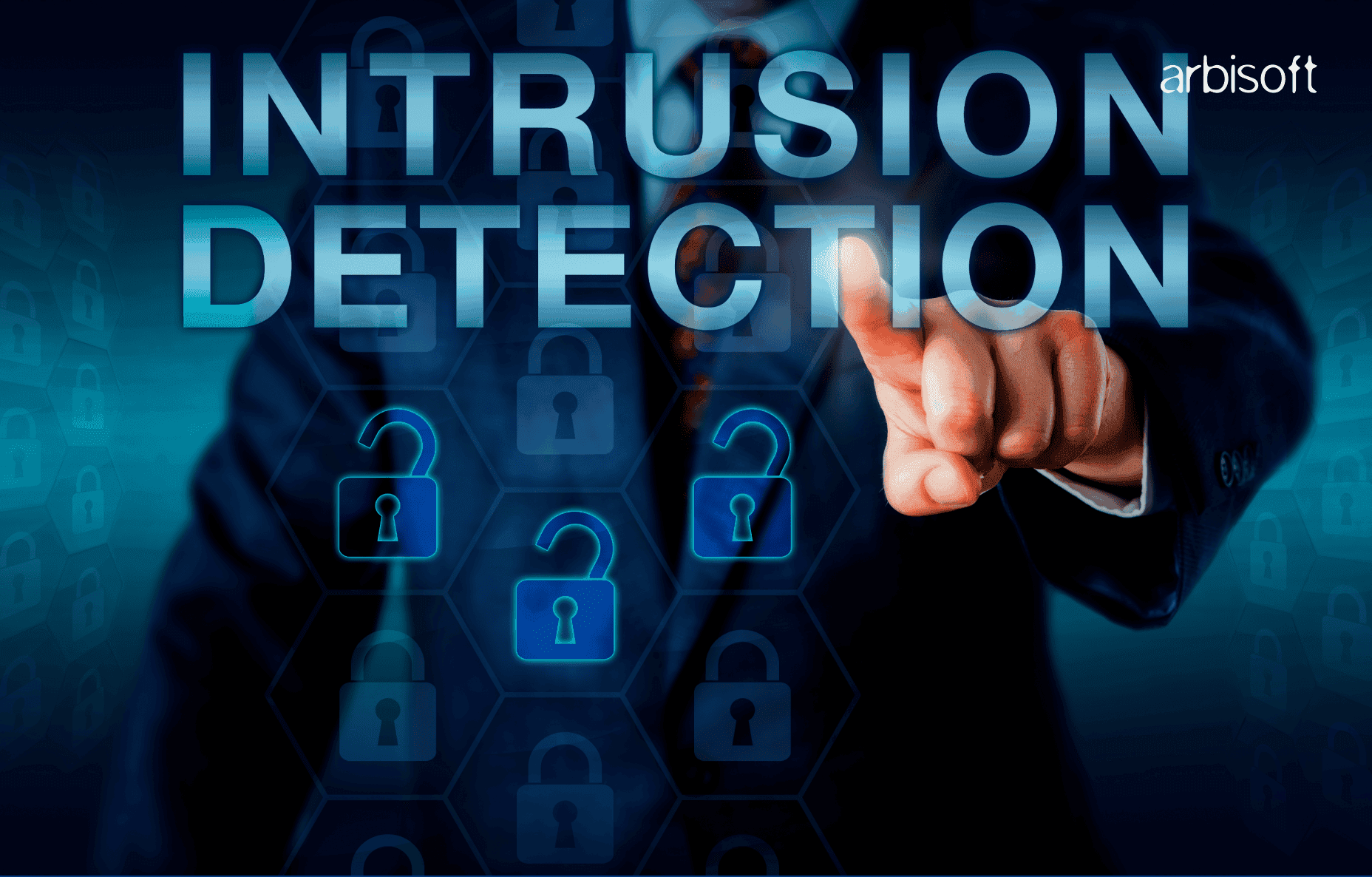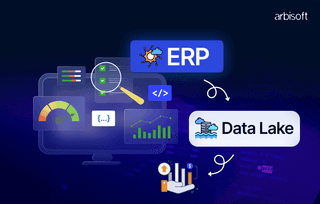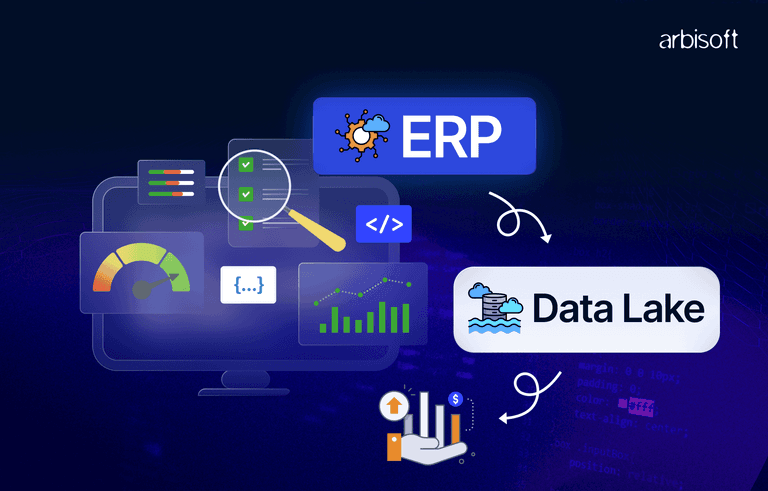We put excellence, value and quality above all - and it shows




A Technology Partnership That Goes Beyond Code

“Arbisoft has been my most trusted technology partner for now over 15 years. Arbisoft has very unique methods of recruiting and training, and the results demonstrate that. They have great teams, great positive attitudes and great communication.”
Why Traditional IDS Fall Short: The Need for Smarter, AI-Powered Security (IDS Series - Part 1)

Introduction
I’ll never forget reading the post-mortem from our security team about the Monday morning they walked in to find over 15,000 alerts waiting in the queue. The weekend had been “quiet” according to our traditional Intrusion Detection System (IDS), but the reality was a flood of notifications; everything from harmless system updates to a sophisticated attack that had been running for three days. As a solutions architect, I wasn’t the one sifting through those alerts, but I had a front-row seat to the chaos and the aftermath. That was 2018, and it was the moment I realized, from the stories and war rooms of my colleagues, why we desperately needed something smarter than rule-based detection.
The 2017 WannaCry attack wasn't just another ransomware incident; it was a wake-up call that exposed how utterly unprepared our signature-based systems were for anything they hadn't seen before. I watched colleagues in hospitals scramble as their systems locked up, railway operators manually directing trains, and entire government departments going offline. What struck me wasn't just the scale of damage, but how our traditional security tools sat there, essentially blind to what was happening.
This shift toward AI and machine learning in cybersecurity isn't just about following the latest tech trend. It's about survival. After spending the last six years implementing these systems across different organizations, I've learned that the difference between AI-powered and traditional IDS isn't incremental; it's transformational.
But here's what most articles won't tell you: implementing AI in cybersecurity is messy. It's full of false starts, unexpected challenges, and moments where you question whether your model is actually making things better or just creating new problems. This guide comes from those trenches; the real experiences of building, deploying, and maintaining these systems when lives and businesses depend on them working correctly.
What makes this guide different? Instead of theoretical discussions about algorithms you'll never implement, I'm sharing the messy reality of what actually works in production. You'll find war stories from the trenches, code that's been battle-tested under fire, and honest assessments of what succeeded and what failed spectacularly.
Whether you're a CISO trying to justify AI security investments to skeptical executives, a data scientist wondering how your models will perform against real attackers, or a security analyst curious about how machine learning might change your daily work, this guide cuts through the marketing noise to deliver practical insights you can actually use.
Target Audience: Stakeholders in Large Software Companies
If you work in a large software company, you know how many cooks are in the kitchen when it comes to security. Over the years, I’ve seen every stakeholder, from CISOs to IT support, bring their own priorities, fears, and blind spots to the table. Here’s what I’ve learned about who really needs to care about AI/ML-powered IDS, and why.
Chief Information Security Officers (CISOs) and Security Leadership
How you benefit: If you’re a CISO, you’re constantly asked to justify every dollar spent. I’ve sat in those boardrooms, sweating through questions about ROI and risk. My advice: use AI/ML results to tell a story about risk reduction and resilience, not just compliance. When you can show how AI cut your false positives by 90%, you’ll have the board’s attention and their support.
Security Operations Center (SOC) Teams
How you benefit: If you’re in the SOC, you’re probably drowning in alerts. I’ve watched teams burn out chasing ghosts. My practical tip: let the ML handle the noise, so you can focus on the real threats. The first time you see your queue shrink from thousands to a handful of high-quality alerts, you’ll wonder how you ever lived without it.
Data Scientists and ML Engineers
How you benefit: If you’re a data scientist, you’ll quickly learn that security data is messy, imbalanced, and full of surprises. My advice: spend twice as much time on feature engineering as you think you need. The best models I’ve built came from obsessing over the weird edge cases, not just tuning hyperparameters.
Software Engineering Teams
How you benefit: If you’re an engineer, integrating ML-based IDS isn’t just another API call. I’ve seen teams get burned by treating security as an afterthought. My lesson: bake security into your CI/CD pipeline from day one. It’s a lot easier to build it in than bolt it on later.
DevOps and Platform Engineers
How you benefit: If you’re in DevOps, you’ll face the reality that ML models are just as fragile as any other service. I’ve had models crash under load or drift into uselessness. My tip: monitor your models like you monitor your servers; latency, accuracy, and resource usage all matter.
Compliance and Risk Management Teams
How you benefit: If you’re in compliance, you know the pain of audit season. I’ve been grilled by auditors who wanted to see every decision my models made. My advice: build explainability and audit trails in from the start. It’ll save you weeks of headaches later.
Product Managers and Technical Leaders
How you benefit: If you’re a PM, security is now a feature, not just a cost center. I’ve seen products win deals because they could prove proactive threat detection. My tip: use AI-powered security as a differentiator in your roadmap and your sales pitch.
IT Infrastructure Teams
How you benefit: If you’re in IT, you’re the one who has to make all this work in the real world. I’ve watched teams struggle to connect new IDS to legacy systems. My advice: start with a pilot, document every integration pain point, and don’t be afraid to push back on vendors who promise “seamless” deployment.
Research and Development Teams
How you benefit: I’ve worked with R&D teams who thought security was “someone else’s problem”, until a customer asked about it in a sales call. The day you can say your product is “AI-hardened,” you’ll see the difference in your win rate and your pricing power.
Business Analysts and Strategy Teams
How you benefit: If you’re in business strategy, don’t just look at the market size; look at how AI security changes the conversation with your customers. I’ve seen deals close because we could show proactive defense, not just react to incidents. You’re not just selling security; you’re selling peace of mind.
Legal and Privacy Officers
How you benefit: If you’re in legal or privacy, you’ll get tough questions about “black box” decisions. I’ve been in those meetings. My advice: get comfortable explaining how your models work, what data they use, and how you can audit them. Regulators are only getting more demanding.
Each stakeholder group faces unique challenges when it comes to AI-powered security, and surprisingly, their biggest obstacles often aren't technical; they're organizational and cultural. I’ve seen great tech fail because teams couldn’t agree on priorities or trust the new system. Don’t underestimate the human side of this transformation.
Understanding Intrusion Detection Systems
Now that we've established who needs to care about this technology and why, let's dive into the technical foundations. But first, let me share why traditional approaches are fundamentally broken.
What is an IDS?
Let me paint you a picture from a real deployment I worked on at a financial services firm. Their network had over 50,000 endpoints, processing millions of transactions daily. Their traditional network-based IDS (NIDS) sat at the network perimeter like a security guard with a very specific checklist. If someone tried to access the building with a known fake ID, the guard would stop them. But if they had a convincing fake that wasn't on the list, or if they were an authorized person acting suspiciously, the guard would wave them through without a second thought.
This isn't theoretical; during a penetration test, we watched their traditional NIDS completely miss an attack that used legitimate Windows PowerShell commands in an unusual sequence. The system saw each command as normal (which they were), but couldn't recognize that the pattern spelled out "data exfiltration."
Network-based IDS (NIDS): I've deployed these at everything from small startups to Fortune 500 companies. The challenge is always the same; they're great at catching known bad guys but terrible at recognizing when good guys start acting badly. During the SolarWinds incident, many NIDS systems actually flagged the suspicious communications, but they were buried among thousands of similar-looking alerts that turned out to be false positives.
Host-based IDS (HIDS): The Target breach is a perfect example of why placement matters more than technology. Their HIDS systems on the point-of-sale terminals were working exactly as designed. They detected the malware, generated alerts, and sent them to the security team. But here's what most people don't know: those alerts were mixed in with approximately 24,000 other alerts generated that same week. Even the best human analysts can't effectively process that volume.
Hybrid IDS: Think of this as having both security cameras at the entrance and motion detectors in every room. It sounds great in theory, but in practice, you often end up with twice as many false alarms unless you have an intelligent correlation between the systems.
Traditional IDS Limitations
I've personally witnessed every one of these limitations in production environments, usually at the worst possible moments.
i) Signature Dependency
During the DNC breach investigation, we reverse-engineered some of the tools the attackers used. What struck me wasn't their sophistication; it was their simplicity. They used common system administration tools in slightly uncommon ways. Any signature-based system would have missed this because there was nothing inherently "bad" in the individual components of their toolkit.
ii) High False Positives
I once calculated that a single security analyst at a mid-size company was receiving approximately one alert every 3.2 minutes during business hours. Even if each alert took just 30 seconds to evaluate (and many took much longer), they were spending over 25% of their time just acknowledging false alarms. By the time a real threat appeared, they were suffering from what psychologists call "alert fatigue."
iii) Zero-day Vulnerability
The Equifax breach haunts everyone in cybersecurity, but not for the reason you might think. The vulnerability they exploited had actually been disclosed months earlier. The problem wasn't that it was unknown; it was that their detection systems couldn't recognize the exploitation pattern because it didn't match any existing signatures. This is the difference between knowing about a vulnerability and being able to detect when it's being exploited in the wild.
This fundamental mismatch between static rules and dynamic threats explains why even the most well-funded organizations struggle with traditional IDS systems.
The Evolution of Cyber Threats
Given these limitations of traditional systems, it's crucial to understand how dramatically the threat landscape has evolved. The attackers have changed their game entirely, and our defenses need to evolve accordingly.
From Script Kiddies to Nation-State Actors
The first major incident I investigated involved the "ILOVEYOU" virus in 2000. It was destructive, but it was also predictable. Once we understood how it worked, stopping it was straightforward: update the signatures, patch the vulnerability, and educate users about suspicious email attachments. Done.
Compare that to a recent APT investigation I consulted on. The attackers had been present in the environment for 14 months. They used legitimate system administration tools, maintained multiple persistence mechanisms, and carefully throttled their activities to stay below detection thresholds. When we finally detected them, it wasn't because they made a mistake; it was because we had implemented behavioral analytics that could identify subtle patterns in user activity that human analysts had missed. The traditional IDS logs from that period show nothing but routine system administration. The behavioral analytics revealed a completely different story.
The SolarWinds attack represents the evolution of this sophistication. These weren't opportunistic hackers looking for quick wins. They demonstrated patience that rivals traditional intelligence operations, spending months infiltrating a software supply chain, then waiting even longer to selectively activate their access only on the highest-value targets. That level of operational security and strategic thinking requires defensive approaches that are equally sophisticated.
Advanced Persistent Threats (APTs)
I've helped investigate APT campaigns that spanned multiple years and dozens of organizations. What always strikes me isn't the complexity of their initial breach (which is often surprisingly simple), but the sophistication of their persistence and evasion techniques.
APT29's State Department breach is a perfect case study in why traditional detection fails. For over a year, these attackers accessed sensitive diplomatic communications while appearing to security systems as nothing more than routine administrative activity. They used legitimate remote access tools, timed their activities to coincide with normal business hours, and carefully limited their data exfiltration to volumes that wouldn't trigger bandwidth monitoring alerts.
When we finally detected them, it wasn't because they made a mistake; it was because we had implemented behavioral analytics that could identify subtle patterns in user activity that human analysts had missed. The traditional IDS logs from that period show nothing but routine system administration. The behavioral analytics revealed a completely different story.
Living-off-the-Land Attacks
This trend toward using legitimate system tools for malicious purposes has fundamentally changed how we think about threat detection. I recently investigated an incident where attackers used nothing but PowerShell, WMI, and built-in Windows networking tools to compromise an entire domain. Every individual command they executed was something a legitimate system administrator might run on any given day.
The Carbanak group's approach to financial institution attacks exemplifies this perfectly. Instead of deploying easily-detected custom malware, they lived off the land, using the same tools that system administrators use daily. From a traditional IDS perspective, their activities were indistinguishable from legitimate system management. It was only through behavioral analysis and understanding the context of these activities that we could identify them as malicious.
Conclusion
Here's the cold truth: our old IDS tools are basically useless against today's threats. They're built for a different era, and honestly, they're creating more work than they're solving. I've seen the fatigue firsthand; good analysts drowning in noise while actual breaches slip through.
That's why this shift to AI isn't some academic exercise. It's practical. Necessary. We're moving from signature-based guessing to behavior-based detection. It's messy work, but it's the only way forward.
In the next part, we roll up our sleeves. I'll walk you through real implementations; what actually works, what doesn't, and how to make this stuff operational without blowing up your SOC.
























